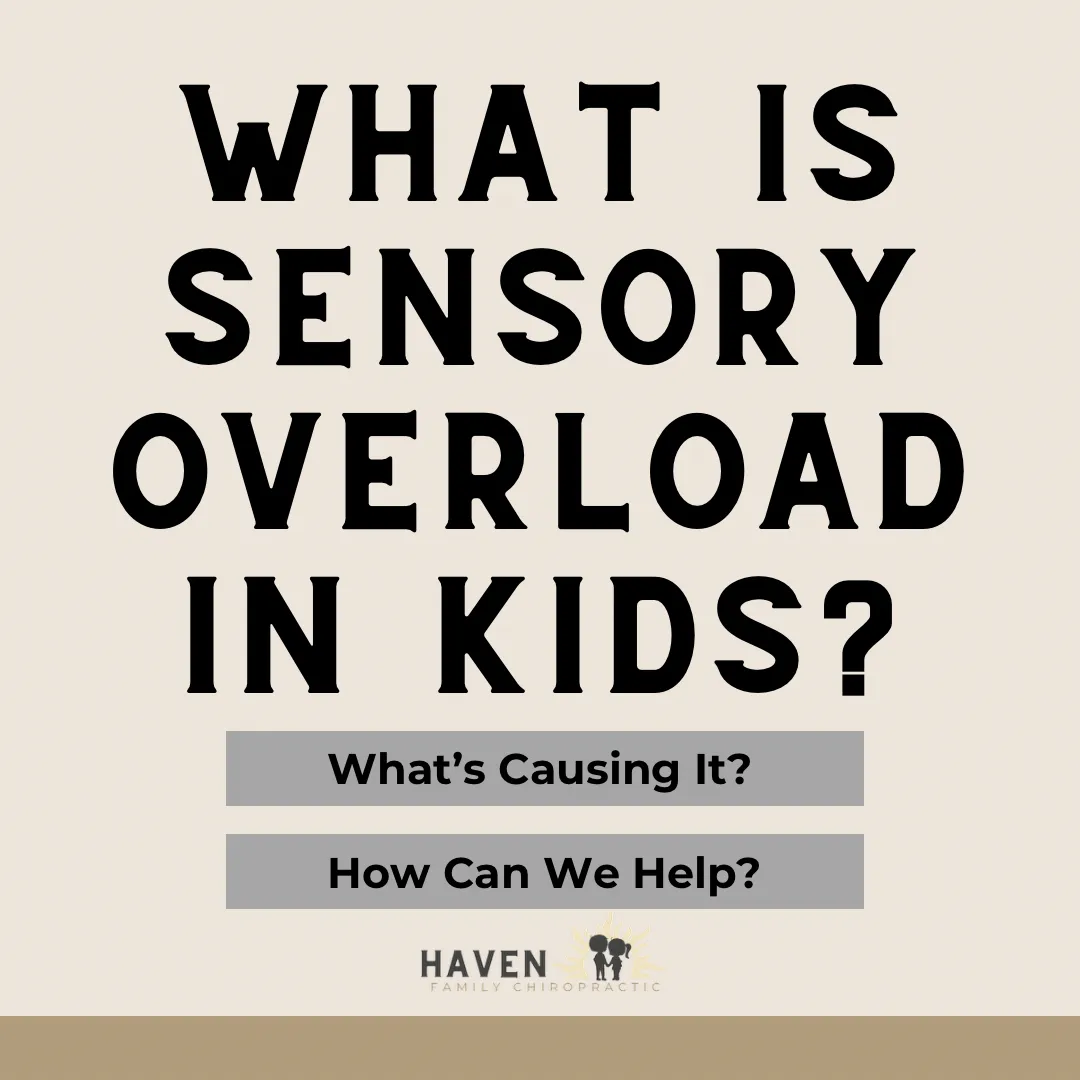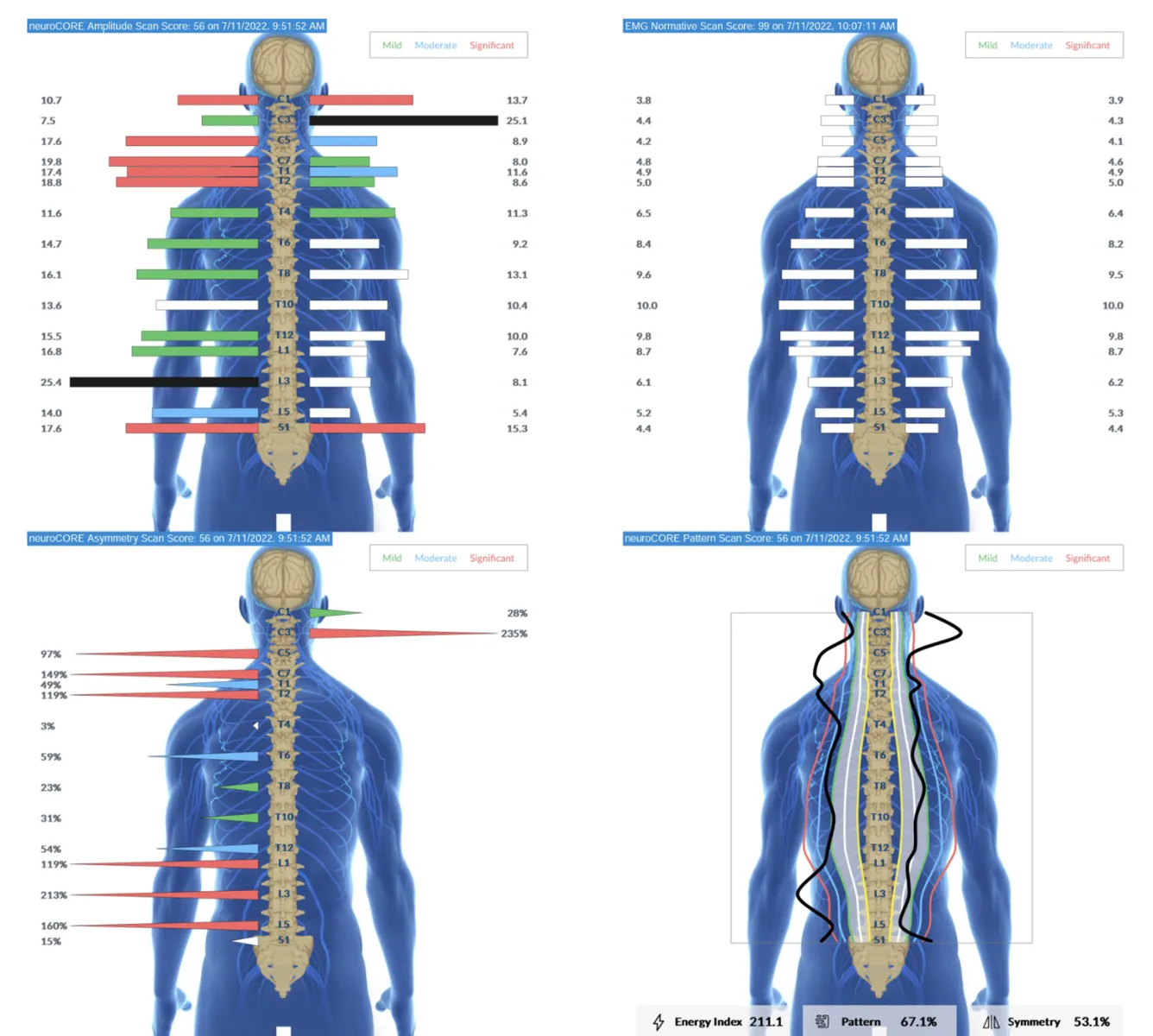WHAT IS SENSORY OVERLOAD?
Sensory overload refers to a condition in which a child’s senses become overwhelmed by the amount or intensity of sensory information they receive from their environment. This can also affect adults, but it primarily affects children.
When children experience sensory overload, it hampers their ability to process sensory stimuli effectively. This can then lead to frustration, anger, outburst, tantrums, and emotional meltdowns that can significantly limit the family’s quality of life.
Various triggers can contribute to sensory overload. Some common ones include:
1. Loud noises: Sudden or prolonged loud sounds can overwhelm a child’s auditory system, causing distress and discomfort.
2. Crowded spaces: Being in environments with a high concentration of people, such as busy shopping centers or crowded classrooms, can lead to sensory overload.
3. Emotionally intense situations: Strong emotional experiences, like witnessing a heated argument or confrontation, can overwhelm a child’s emotional and sensory systems simultaneously.
4. Drastic environmental changes: Abrupt changes in the physical environment, such as moving to a new house or traveling to an unfamiliar place, can trigger sensory overload.
5. Unexpected or unwanted physical contact: Some children are highly sensitive to touch and may experience sensory overload when touched unexpectedly or in a way that makes them uncomfortable.
6. Intense smells: Strong or unpleasant odors can overwhelm a child’s olfactory system and contribute to sensory overload.
WHAT ARE THE SYMPTOMS OF SENSORY OVERLOAD?
Sensory overload can show up as a range of symptoms. Some common signs include:
- Discomfort: Children experiencing sensory overload may feel physically or emotionally uncomfortable, constantly squirming or wanting to immediately leave the situation.
- Crying: Overwhelmed children may cry in response to sensory overload, which then often escalates to full-blown tantrums and meltdowns.
- Anxiety: Overstimulation of the senses can trigger anxiety in those with sensory overload.
- Irritability: Sensory overload can make individuals easily irritable or agitated.
- Loss of focus: Individuals may struggle to concentrate or maintain attention when overwhelmed by sensory stimuli.
Additionally, since sensory overload negatively affects all the body’s senses, children who are struggling with it often close their eyes, cover their faces, and place their hands over their ears when in loud, stimulating environments. When things are really bad, they may run away from the situation because they feel so overwhelmed and scared.
Unfortunately, since children struggling with sensory overload struggle so much to process normal, everyday information from their environment, there can be negative long-term health effects in the form of developmental delays and missed milestones. The child’s brain gets so busy and distracted dealing with the sensory overload that it then misses out on important sensory learning information that is crucial to the development of things like motor coordination, speech, behavior, and emotional regulation.
CAUSES OF SENSORY OVERLOAD
Sensory overload occurs when the brain struggles to properly process and integrate the vast amount of sensory information it receives from both the body and the environment.
For most children, sensory overload is perhaps the most obtrusive symptom they experience when struggling with Sensory Integration Disorder (also known as Sensory Processing Disorder), or other conditions such as Autism, ADHD, and ODD.
This means to fully understand what the root cause of sensory overload really is, we need to explain what’s causing Sensory Processing Disorder overall. And we’ll do that by first quickly explaining what the function of the nervous system is overall.
Simply put, the role of the nervous system is 3-fold:
1. To receive input and process information from both the internal and external environment (perception)
2. To integrate and process information, filtering it so that the important information gets in and the non-important information does not (integration)
3. To make decisions and generate appropriate actions, responses, and functions throughout the entire body (action)
Another way to understand the crucial role the nervous system plays in your child’s health is to look at this quote from renowned Cellular Biologist and Epigenetics expert Dr. Bruce Lipton, who states:
“The function of the nervous system is to perceive the environment and coordinate the behavior of all cells in the body.”
When a child struggles with SPD and thus sensory overload, they simply cannot properly perceive and coordinate their environment. For kids struggling specifically with sensory overload, their nervous system lets in far too much noxious or annoying stimuli that is supposed to be filtered out and not reach the functional centers of the brain.
This is why common everyday occurrences such as bright or flashing lights, loud noises, tags or seams on clothing, or certain smells can so quickly and excessively irritate children struggling with SPD and Sensory Overload.
THE ROLE OF SUBLUXATION AND DYSAUTONOMIA
To fully understand sensory overload, it’s important to know all about two terms that are likely brand new to most parents – subluxation and dysautonomia.
To keep it simple, subluxation and sensory processing disorder are two nearly interchangeable terms since subluxation alters the nervous system’s ability to properly receive and integrate neurological information from both the internal and external environment of the child.
The most common presentation of subluxation is when it causes the entire sympathetic fight-or-flight nervous system to shift into a state of overdrive. This truly is what best describes the root cause of sensory overload, as it is both a simultaneous state of excessive sympathetic tone and neurological function and suppressed or under-stimulated parasympathetic tone and function. This imbalance of the nervous system is known as dysautonomia, and it’s the underlying foundation for sensory overload and related challenges.
The primary nerve responsible for the “rest and relaxation” side of the nervous system (parasympathetic) is the Vagus Nerve, and it is often injured or damaged (subluxated) during the birth process, especially when interventions such as C-section, forceps, induction, or vacuum extraction are involved. Overlooked and dismissed birth trauma is a very common factor frequently seen with clinical presentations of sensory overload, Sensory Processing Disorder, Autism, ADHD, Anxiety, and other neurosensory related conditions in kids today.
While most pediatricians dismiss a child’s early struggles, such as colic, by saying to parents, “don’t worry, they’ll grow out of it,” – we understand that early childhood struggles like colic and reflux can be a sign of sensory overload challenges down the road.
An infant who struggles to sleep well, self-soothe, and handle sensory input far too often grows into (not out of) sensory and other neurological challenges down the road. Just because it gets a different name or diagnosis doesn’t mean it’s a new condition with a different root cause.
HOW TO COPE WITH AND MANAGE SENSORY OVERLOAD
While most treatment and care strategies that traditional medical professionals will recommend for children struggling with sensory overload focus solely on avoidance and creating other outlets for their sensory processing challenges, our approach focuses entirely on addressing the root cause and seeking to restore balance to the Autonomic Nervous System and Vagus Nerve.
Once the nervous system is restored to balance and no longer stuck in that excessive sympathetic response, the child can far better handle sensory inputs like bright lights, loud noises, physical touch, and so forth.
In order to get the sympathetic fight-or-flight response to calm down and not remain stuck in overdrive, we’ve got to focus first on activating and stimulating the Vagus Nerve and parasympathetic calming side of the nervous system.
Doing just that is the entire focus of Neurologically-Focused Pediatric Chiropractors within our PX Docs Network. They are trained on clinical protocols and care programs that directly address a child’s subluxation and dysautonomia, and help families experience a far better quality of life without drugs and without having to constantly avoid public places, new situations, and all that life has to offer the developing child!
Our clinical approach is not only vastly different from that of traditional medicine and therapies, but it’s also extremely unique within the chiropractic field. This difference first begins with the in-depth case history and consultation, diving deep into the known triggers of sensory overload like a stressful pregnancy, birth interventions and trauma, and noxious stimuli and toxins that show up way too often in a child’s life today.
From there, we use an incredible piece of technology that gets right to the root cause of sensory overload and Sensory Processing Disorder. These INSiGHT Scans are truly remarkable in that they will help find and detect the presence of subluxation and dysautonomia and then also be able to both quantify it (how bad is it?) and locate it (where do the adjustments need to be made?).
SENSORY OVERLOAD TEST
The most important scan for children with sensory overload is what’s called the NeuroSpinal EMG Scan, or Surface Electromyography. That is simply a fancy term for measuring the amount of stress and tension pent up and stuck within a child’s body. Speaking of fancy scientific terms, this tension that comes from the NeuroSpinal System and reaches the brain is called nociception. Simply put, nociception is input or information that is stressful, annoying, painful, and “noisy” to the brain and central nervous system.
We often refer to sensory overload, SPD, and ADHD as “Noisy Brain Syndrome” because that’s what is really going on. Instead of the brain properly receiving calming and organizing information, this nociceptive “noise” gets in instead. When the noise gets too high and too much, the child then begins to exhibit the behaviors and symptoms listed above.
The other side of this sensory processing system is what’s called proprioception. Proprioception is movement and position-based input and information processing, and the brain of a developing child relies on proper amounts of motor and proprioceptive input for optimal development and function. You’ve probably heard the phrase “movement is life” before, and it’s most especially true for the pediatric developing brain.
Subluxation, as mentioned above, alters sensory input and information into the brain in such a way that causes proprioception to decrease and go down, thereby opening the “gate” for nociceptive and noxious, stressful stimuli to get in. This imbalance of sensory information and processing is the true root cause of sensory overload and many other neurological conditions in children.
Below is an example of an EMG scan on a child struggling with sensory overload, which we’ve nicknamed in our office “Raging Bull” challenges. All of those increased colors (green, blue, red, and even black) and the high Total Energy score in the bottom left (should be around 100-125) indicate this child is subluxated and struggling with sensory overload and dysautonomia.
FROM SENSORY OVERLOAD STRUGGLES TO AN EASIER, HAPPIER LIFE
At Haven Family Chiropractic, we understand the challenges faced by children with sensory overload and how it can seem like your child will never be able to self-soothe, regulate, and have a high quality of life. But that does not have to be the case for your family. If you are local to our office, head on over to our scheduling page or give our office a call!
We are dedicated to helping children and their families navigate the complexities of sensory overload. If you’re ready to see your child’s struggles turn to smiles and joy, head on over to our PX Docs Directory nd schedule your consultation and INSiGHT Scan appointment right away if you are not local to our office. Once we see your child’s EMG and other scans, we can put together a customized, drug-free care plan in play to help calm their overwhelm and greatly improve the whole family’s quality of life!


